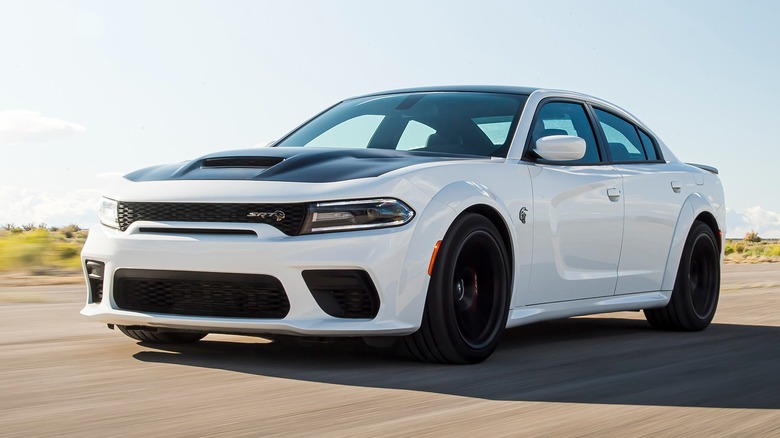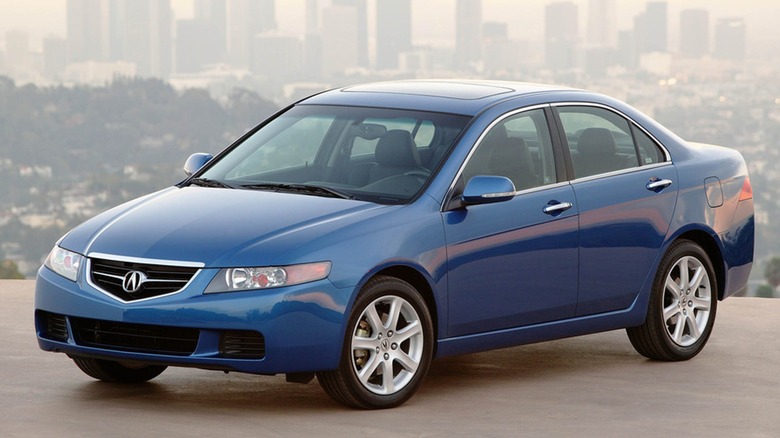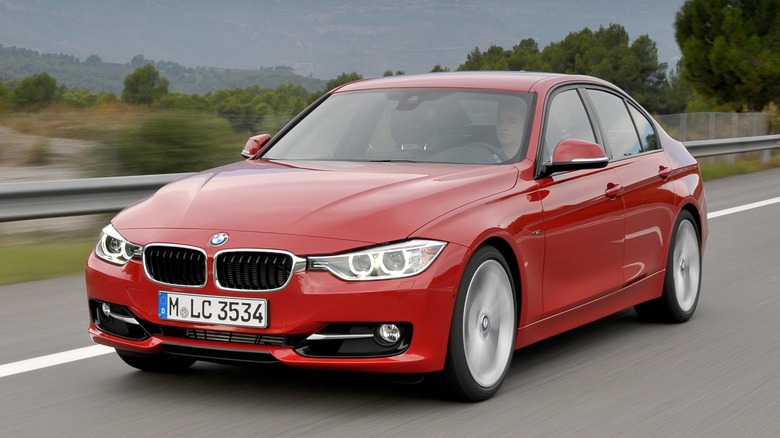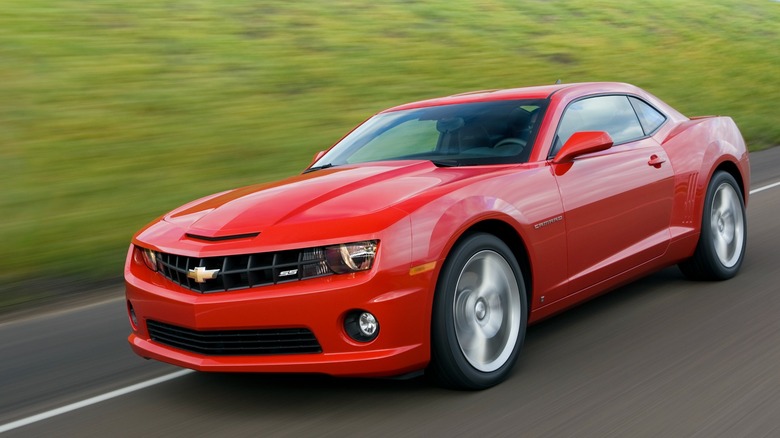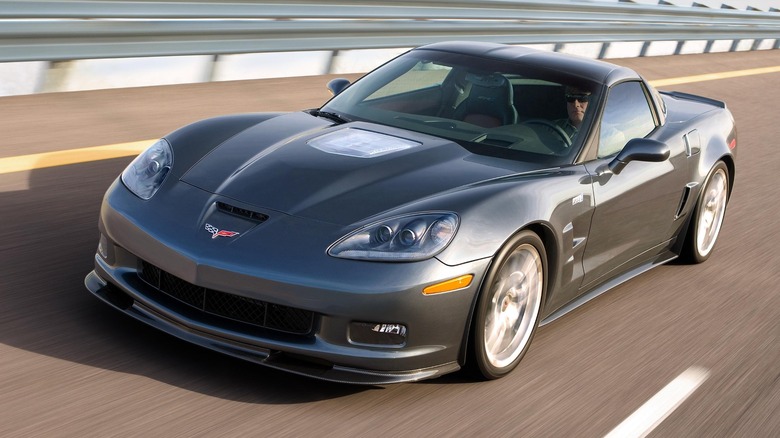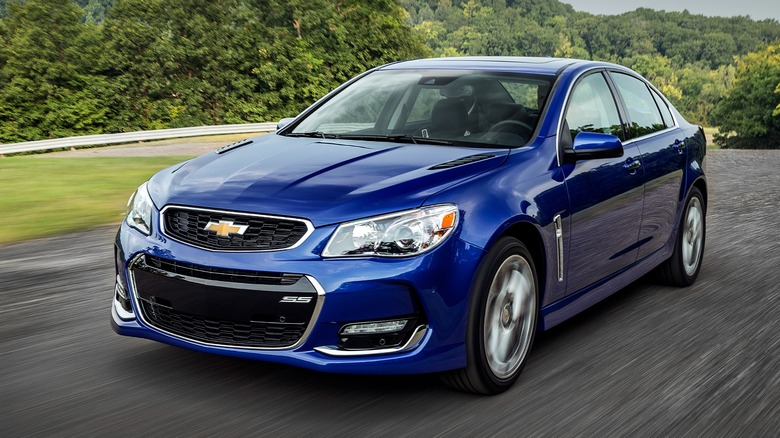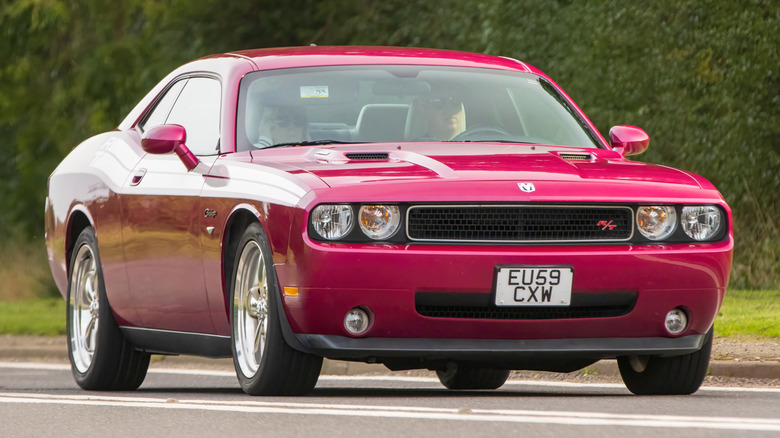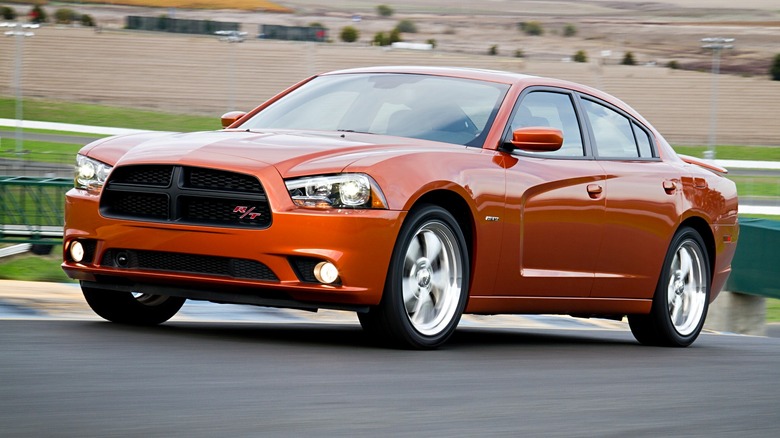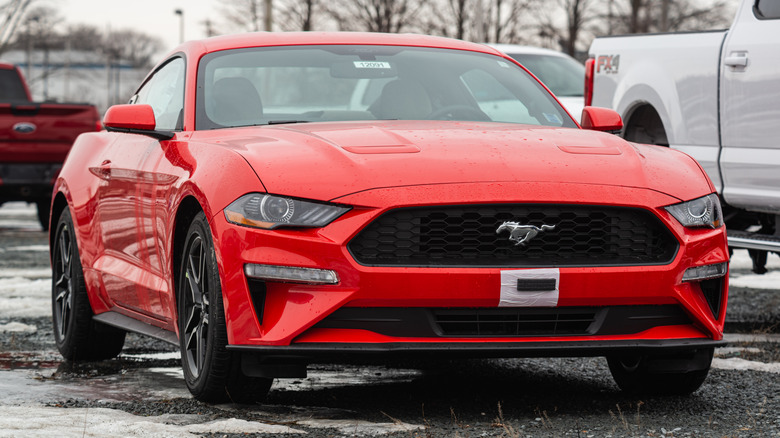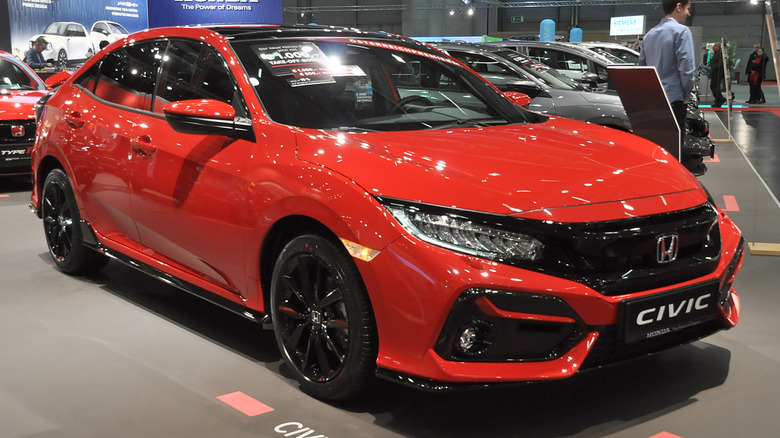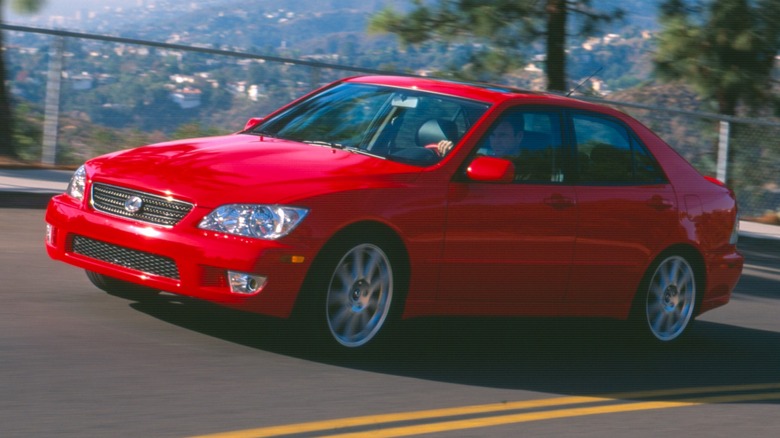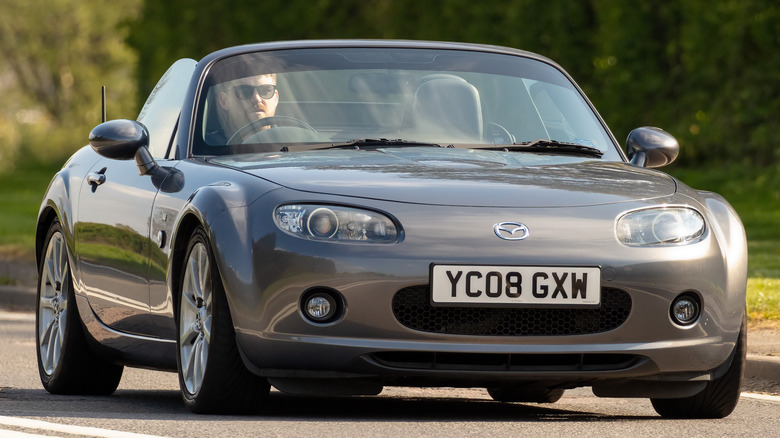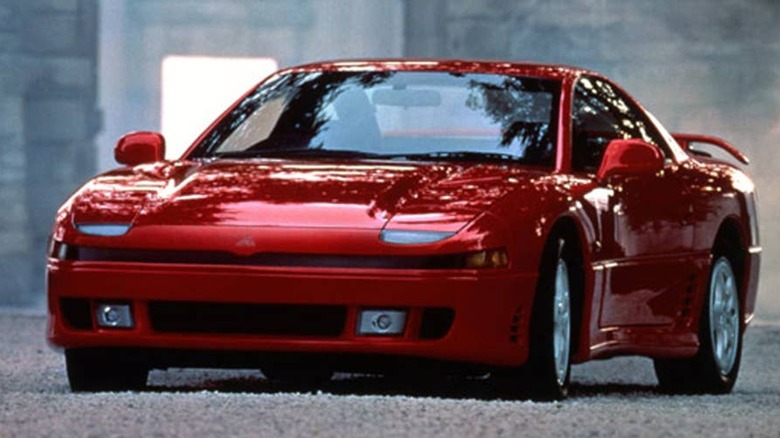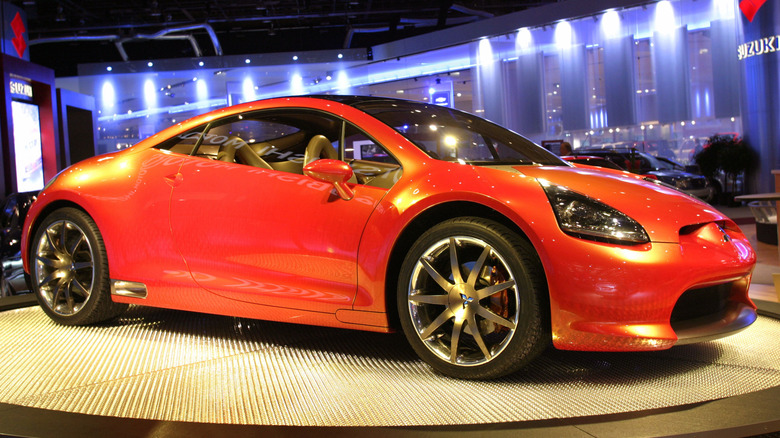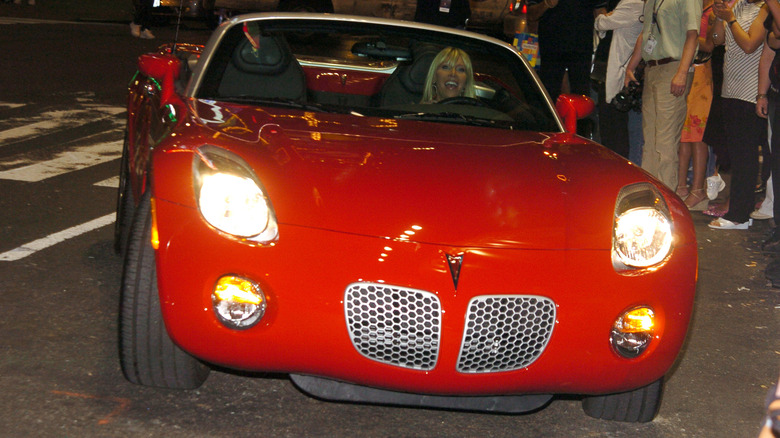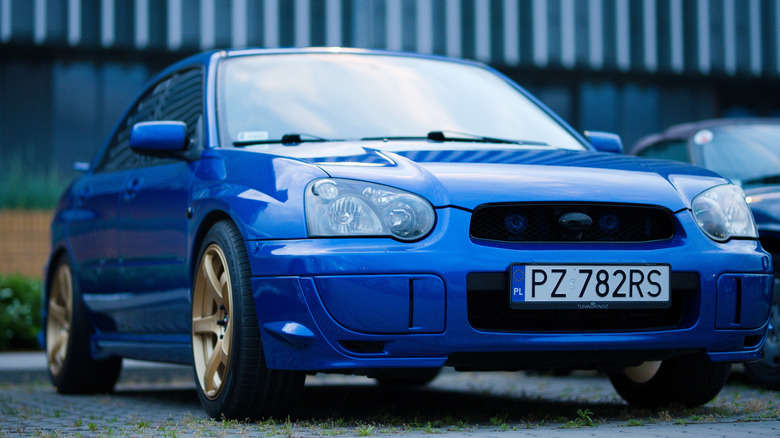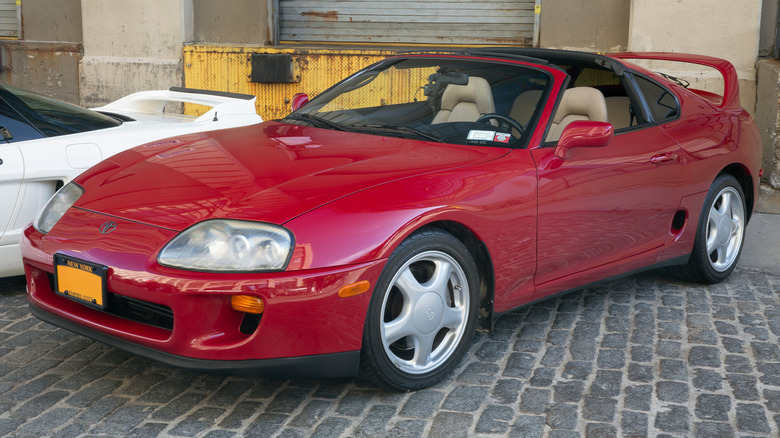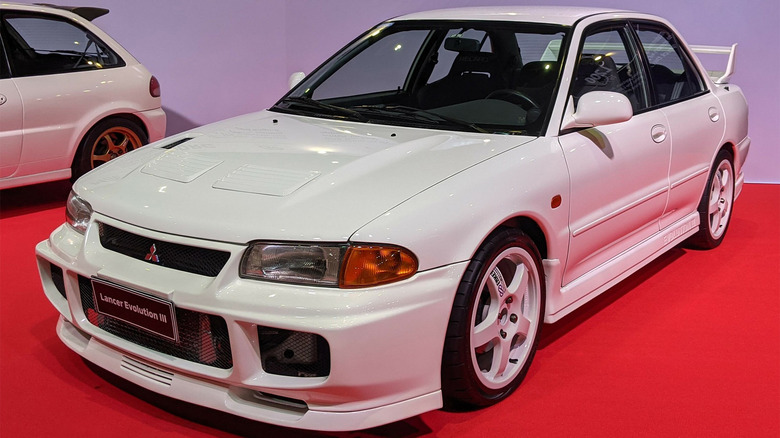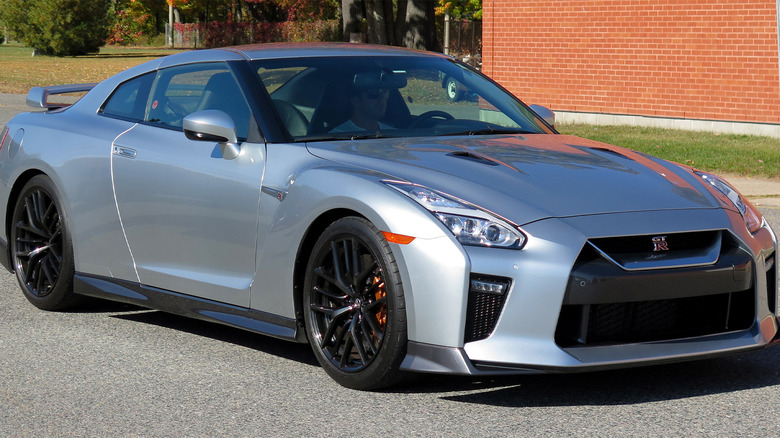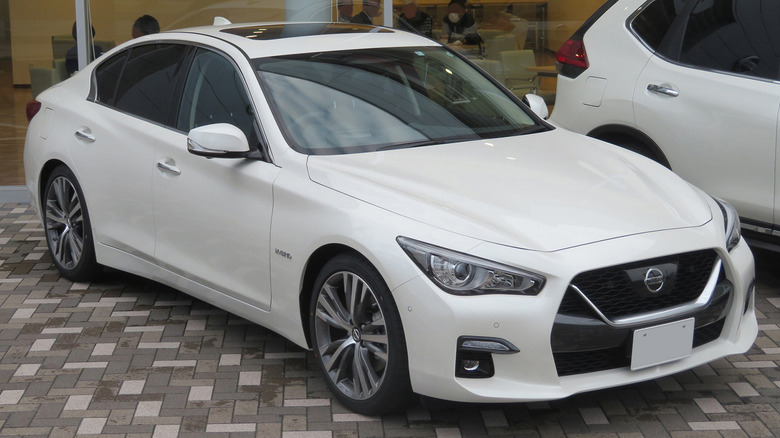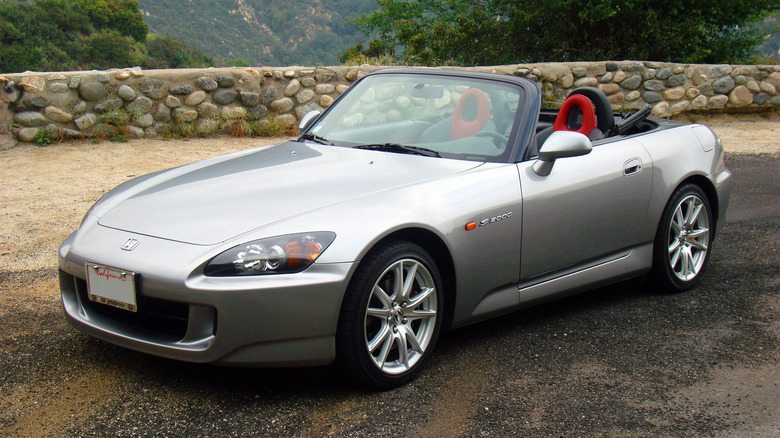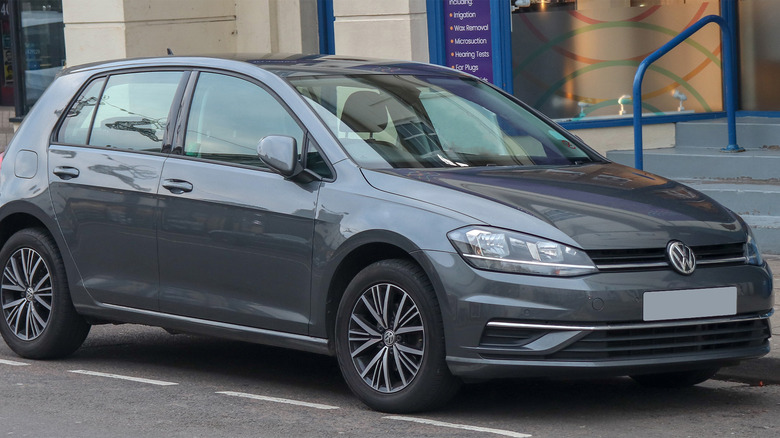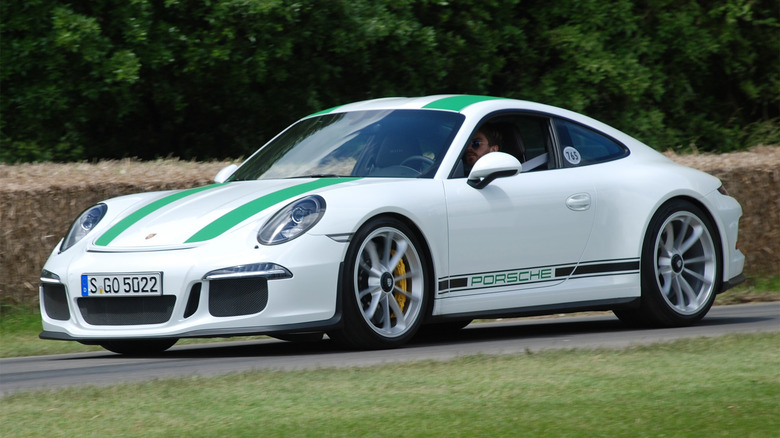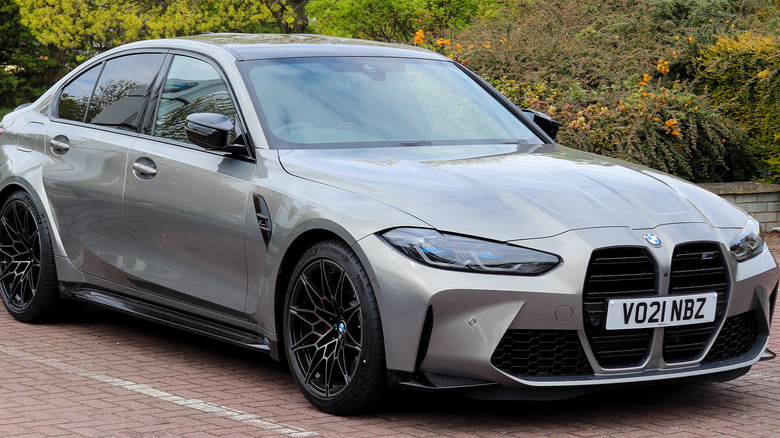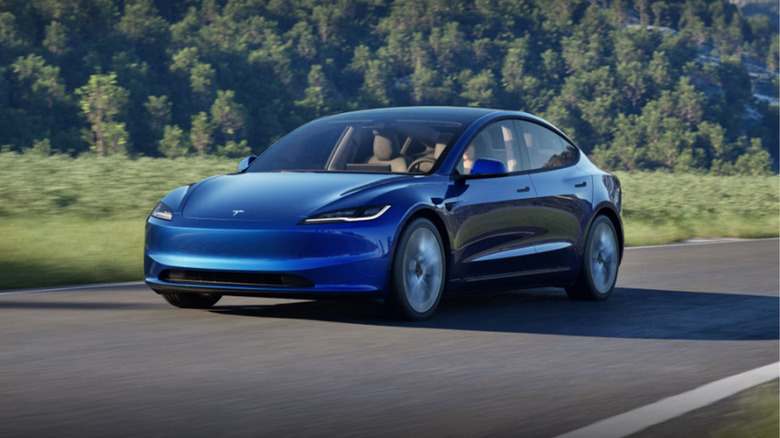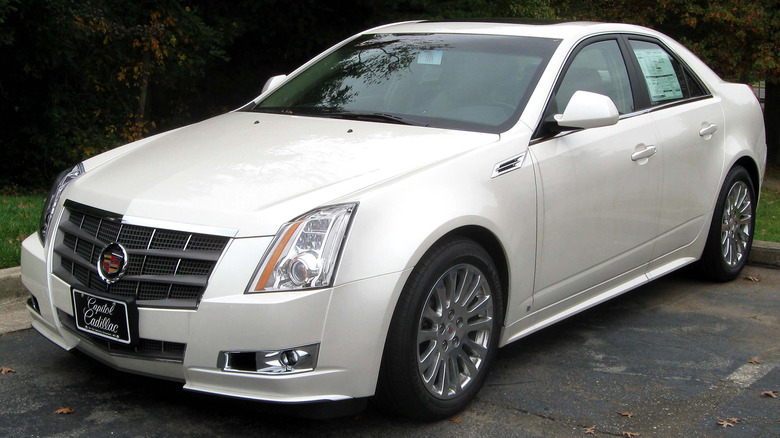25 Popular Cars For Street Racing
The street racing world thrives on the thrill of pushing the car and the driver to their limits. In this adrenaline-pumping world, enthusiasts get a chance to feel the mechanical symphony of the vehicle and unlock its hidden potential. They also get a sense of camaraderie built around a shared passion for meticulous customization and speed.
These street racing cars aren't your average rides; they are legends loved for their power, speed, and thrill of street racing. They range from American muscle monsters like the Mustang, Challenger, and Camaro to legendary Japanese icons like the Subaru Impreza WRX, Mazda MX-5 Miata, and Mitsubishi 3000GT.
These cars are widely known for their performance capabilities and boast a strong presence in movies, car enthusiast circles, and video games. They also enjoy active aftermarket support, making them easier to modify for more performance.
Acura TSX
Acura introduced the first generation TSX in 2004 as a luxury sedan to complement the Acura TL and RL models. While the TSX was based on the Accord, Acura used the European Accord, which competed with German luxury sedans like the Audi A4 and BMW 3 Series. To keep in line with these European rivals, the TSX had a multilink rear and a double-wishbone front suspension, helping give it a sporty driving character. In addition, it had a wide array of electronic driver aids, including a traction control system, vehicle stability assist, and an anti-lock braking system.
Under its hood sat a 2.4-liter four-cylinder K24 engine producing 200 hp at 6,800 rpm and 166 lb-ft of torque at 4,500 rpm. The engine is paired with a six-speed manual transmission or a five-speed automatic, sending power to the front wheels. Acura's use of i-VTEC technology helped ensure the TSX had a broad, usable powerband up to its 7,100 rpm redline. While that's not an impressive performance nowadays, the K24 engine is a great candidate for tuning and fitting bolt-on modifications. Thanks to its strong bottom end, it can handle upgrades like lighter rods, low-compression pistons, and a stronger crank.
For bolt-on power, you can consider modifications like high-flow fuel injectors, a performance exhaust, a larger throttle body, a cold air intake, an ECU tune, performance camshafts, and even forced induction. With these modifications, the TSX will accelerate faster and sound meaner, making it an ideal street racing machine.
BMW 335i E90
The E90 BMW 3 Series was the fifth-generation model offering buyers a range of impressive and innovative engine and chassis improvements. On its debut, the E90 3 Series had four new engines: one diesel and three gasoline-powered units. These engines boasted a significant increase in economy, refinement, and performance. The 335i sat at the top of the lineup, boasting a twin-turbocharged 3.0 liter inline-6 engine with 300 hp at 5,800 rpm and 300 lb-ft of torque. This was the N54 engine, which boasted different stroke and bore dimensions and an aluminum block.
Unlike the other 3 Series engines, the N54 had special turbo-related cooling features and high-pressure direct fuel injection, earning it delirious praise among enthusiasts. BMW paired this engine with a six-speed manual or automatic transmission, helping the 335i scurry from 0 to 60 mph in 5.6 seconds with the automatic and 5.4 seconds with the manual transmission. According to J.D. Power, these variants had excellent ratings of over 80/100, making the 3 Series lineup a reliable option for enthusiasts.
The E90 335i variants are available at reasonable prices, with low mileage variants selling for around $8,000 to $11,000 on Edmunds. This makes the 335i a great street racing alternative on a budget. In addition, the N54 is another easily customizable engine, with enthusiasts getting over 500 hp with bolt-on upgrades like a tune, dual cone intakes, a chargepipe, downpipes, and a competition intercooler.
Chevrolet Camaro
Chevrolet launched the Camaro in 1966, two years after the Mustang. Since then, there has been a wide array of iconic Camaro models, including the Z/28 and ZL1. Nowadays, the Camaro line is on its way out, with 2024 being its last production year. Available in multiple trims, the most potent variant was the Camaro ZL1 1LE, which used a supercharged 6.2-liter V8 engine with 650 hp and 650 lb-ft of torque. It would've made a great street racer, though its $72,100 starting price made it an option only for wealthier enthusiasts.
Fortunately, older Camaros like the fifth-generation SS make excellent street racing alternatives. This Camaro SS had two engine options: the L99 and the more powerful LS3. The LS3 6.2-liter V8 engine produced 426 hp and 420 lb-ft of torque, and it paired with a Tremec TR-6060 six-speed manual transmission. This version of the Camaro had a performance suspension package, Brembo four-piston calipers, and launch control, making it an ideal street racing muscle car.
Chevrolet Corvette
The Corvette has been around for eight generations since its debut in 1953. For six decades, the Corvette was a front-engine sports car boasting an array of V8 engines as standard. However, Chevrolet revamped the Corvette for its eighth generation, making it the first production mid-engine Corvette. The C8 Corvette has four main flavors: Stingray, Z06, ZR1, and E-Ray.
Fortunately, all trims are worthy street racers, with the Stingray boasting a naturally aspirated LT2 V8 with 495 hp and 470 lb-ft of torque. This helps it sprint from 0 to 60 mph in 2.9 seconds, run the quarter mile in 11.2 seconds, and reach a 194-mph top speed. If the C8's starting price of $68,300 is a bit steep, there are great alternatives, like the C5 Corvette with a 5.7-liter V8 boasting 345 hp and 350 lb-ft of torque or the C6 with its LS3 6.2-liter V8 engine with 430 hp and 424 lb-ft of torque.
Chevrolet SS
Chevrolet introduced the SS in 2014 as its first V8, rear-wheel drive performance sedan since 1996. This SS sedan complemented the revamped Camaro and all-new Corvette Stingray, broadening Chevrolet's performance lineup. GM's very special 6.2-liter V8 LS3 engine sat under the hood, producing 415 hp and 415 lb-ft of torque. This engine was paired with a six-speed automatic transmission with steering wheel-mounted TAPshift paddles. With this combination, the Chevrolet SS was one of the quickest sedans, dashing from 0 to 60 mph in about 5.0 seconds.
In addition, Chevrolet fitted the SS with a sport-tuned chassis, electronic power steering system, multi-link independent rear, and MacPherson strut front suspension geometry, forged aluminum wheels, and standard Brembo front brakes. Chevrolet also optimized the SS with a low center of gravity and a nearly 50/50 weight distribution.
Fortunately, the Chevrolet SS has plenty of bolt-on modifications to help it get more power. They include headers, a cold air intake, a tune, and a ported intake. In addition, fitting a supercharger can help increase the output, making the SS a great street racing machine. While the 2014 variants have higher prices on the used market, the 91/100 J.D. Power driving experience rating talks much about this Chevrolet's capabilities.
Dodge Challenger
The Challenger SRT Demon 170 is the iconic muscle car's swan song and one of the best street racing muscle cars money can buy. It boasts a supercharged 6.2-liter Hemi V8 engine, producing 1,025 hp and 945 lb-ft of torque. These performance figures make the SRT Demon 170 the quickest production vehicle from Dodge since it can rocket from 0 to 60 mph in just 1.66 seconds and run the quarter mile in 8.91 seconds.
Unfortunately, Dodge only made 3,300 units with a starting MSRP of $96,666. While that's the best performance you can expect from a Challenger, there are plenty of Hemi V8-powered models to consider for street racing. Take the example of the 2009 Challenger SRT8. This muscle car had a mighty 6.1-liter Hemi V8 engine producing 425 hp and 420 lb-ft of torque.
The engine worked in tandem with a Tremec TR-6060 six-speed manual transmission or a five-speed automatic, sending power to the rear wheels. Despite being 15 years old, this muscle car had a limited-slip differential, a uniquely tuned electronic stability program, and SRT-tuned suspension and sway bars.
Dodge Charger
Dodge introduced the Charger in 1964 based on the Coronet, a midsize car. While the first Charger variants were coupes, the modern versions are available only as sedans. Over the years, there have been eight Charger generations, with the sixth and seventh generations offering great street racing alternatives.
When Dodge reintroduced the Charger in 2006 for its sixth generation, it boasted 21st-century functionality and performance. The base Charger had a high-output V6 engine, producing 250 hp and 250 lb-ft of torque. However, Dodge still offered the legendary Hemi V8 engines, producing 340 hp and 290 lb-ft of torque in the R/T and 425 hp in the SRT8. The seventh-gen Charger, introduced in 2011, offered more performance from its engine lineup, upping the base performance to 292 hp and the Hemi's performance to 370 hp.
Dodge also produced powerful Charger models, including the modern SRT Redeye Jailbreak, boasting 807 hp and 707 lb-ft of torque from a supercharged 6.2-liter HEMI V8. Most V8-powered Chargers are great street racing options, thanks to their competent engines, rear-wheel drive layout, and many bolt-on modifications. Furthermore, the Charger is also a darling in the film industry, appearing in movies like "Fast Five."
Ford Mustang
Since Ford launched the Mustang in 1964, it has been one of the coolest muscle cars, competing with the Camaro and Challenger. Since its launch, Ford has produced seven Mustang generations, with the latest generation starting production in 2024. For the 2024 model year, the Ford Mustang has three main trims: EcoBoost, GT, and Dark Horse. While the base retains the brand's EcoBoost four-cylinder engine, it produces a respectable 315 hp and 350 lb-ft of torque.
However, for street racing, the V8-powered Mustangs provide more grunt than the V6 versions of the past or the modern four-cylinder variants. While the modern GT produces 486 hp and 418 lb-ft of torque, the top trim Dark Horse boasts 500 hp and 418 lb-ft of torque.
Unfortunately, these models might be pricy for some enthusiasts looking to get into street racing, making the older V8 Mustangs seem more appealing. One such model is the S197, the fifth-generation Mustang. The GT variant had a 4.6-liter V8 engine producing 300 hp and 320 lb-ft of torque. However, with a few bolt-on modifications and a supercharger, it's possible to bring it up to par with the modern Coyote, producing over 500 hp.
Honda Civic
The Civic lineup offers great street racing candidates like the Si and Type R. The Si is one of the most budget-friendly options, especially when considering buying a used one. The eighth-generation model, in production from 2006 to 2011, was one of the best thanks to the use of the K20 engine. This Civic Si boasted a 2.0-liter i-VTEC four-cylinder engine, producing 197 hp at 7,800 rpm and 139 lb-ft of torque at 6,200 rpm. The engine went with a quick-shifting six-speed manual transmission, sending power to the front wheels.
Honda also fitted the Si with a helical-type limited-slip differential, giving it sports car handling. The K20 is still one of Honda's most reliable engines, and despite being almost two decades old, it has plenty of bolt-on modifications like an intake manifold, performance exhaust, cold air intake, and a tune. These mods can enable the K20 to surpass the performance of the modern Honda Civic Si, which boasts a turbocharged 1.5-liter four-cylinder engine with 200 hp and 192 lb-ft of torque.
Lexus IS 300
Lexus announced the IS sedan in 1999, marking a defining moment in the sports luxury sedan segment. The IS was a front-engine sedan with a rear-wheel-drive system that promised better dynamism. This was thanks to the chief engineer Nobuaki Katayama, the creator of the the JDM legend Toyota AE86, Toyota's front engine rear wheel drive classic. The IS 300 was the best version in the lineup, boasting a naturally aspirated version of the 2JZ-GTE engine in the A80 Supra.
The Lexus IS 300's engine has changed for its newest models, but the 3.0 liter inline-six 2JZ-GE engine that powered its earlier generations produced 215 hp and 218 lb-ft of torque, helping it compete with the BMW 3 Series. Lexus paired the engine with a five-speed automatic or manual transmission. In addition, the IS 300 had plenty of performance components, including a double-wishbone front and rear suspension, full-range traction control, and four-wheel disc antilock brakes.
While Lexus offers a more modern and powerful IS 300, its $41,235 starting price is steep compared to the first gen's used price range of $7,000 to $12,000. In addition, the 2JZ-GE engine can handle bolt-on modifications like an intake, ECU tune, cat-back exhaust, and even forced induction, which can help surpass the performance of the turbocharged 2.0-liter four-cylinder in the third-gen IS 300.
Mazda MX-5 Miata
Mazda introduced the MX-5 Miata in 1989 at the Chicago Motor Show. This iconic roadster has been around for over three decades, leading Mazda to create four impressive generations: NA, NB, NC, and ND. Since its inception, the MX-5 Miata used a four-cylinder engine with varying displacements.
In our review of the current generation Mazda MX-5 Miata, the ND, we found it boasted the most powerful engine in the lineup, a 2.0-liter four-cylinder engine with 181 hp and 7,000 rpm and 151 lb-ft of torque at 4,000 rpm. Mazda also increased the redline from 6,800 to 7,000 rpm and fitted a new exhaust system and dual mass flywheel, making the Miata more responsive and quicker.
Nowadays, Mazda offers two MX-5 Miata variants: the base soft top with a $29,530 starting price and the RF hardtop with a $37,550 starting price. While these make great street racers thanks to their enhanced engine and 50/50 weight distribution, the older generations are available at a bargain, with some NC variants selling for under $8,000, according to J.D. Power.
Mitsubishi 3000 GT VR-4
Mitsubishi's 3000 GT was a front-engine sports car in production from 1990 to 2000. Despite being overshadowed by iconic sports cars like the Skyline GT-R, RX-7, and Supra, the 3000 GT was still a great alternative at the time. As standard, Mitsubishi fitted the 3000 GT with a 3.0-liter V6 engine, producing 222 hp and 201 lb-ft of torque.
In addition, Mitsubishi offered the VR-4, the most powerful variant in the lineup, boasting a turbocharged 3.0-liter V6 with 300 hp and 307 lb-ft of torque. This engine paired with a five-speed manual transmission, sending power to the full-time four-wheel drive system. The 3000 GT VR-4 also had a healthy dose of innovative gadgetry, most commonly found on modern sports cars. These included active front and rear wings, four-wheel steering, and an active exhaust system.
While the 3000 GT VR-4 has enough performance and gadgetry for street racing, there are aftermarket modifications that can help up the performance to over 500 hp. These include changing the fuel injectors, adding bigger turbos, tuning the ECU, and upgrading the clutch.
Mitsubishi Eclipse
Mitsubishi produced the Eclipse from 1990 to 2012, offering enthusiasts a sports coupe and convertible with heart-pumping mechanics and eye-catching style. There were four generations of the Eclipse, with the last being in production from 2005. This generation boasted more power from its two main trims: the GS and GT. As standard, the Eclipse GS used a 2.4-liter four-cylinder engine, producing 160 hp and 162 lb-ft of torque.
On the other hand, the Eclipse GT boasted a larger 3.8-liter V6 engine with 259 hp and 260 lb-ft of torque. This helped the Eclipse GT surpass the Mustang V6 and Acura RSX power. The more potent variant, the GT, had two transmission options: a five-speed automatic with Sportronic mode and a new six-speed manual. In addition, Mitsubishi fitted the Eclipse with a four-wheel independent suspension, providing exceptional ride quality, stability, and agile handling.
Nowadays, both the GS and GT models have plenty of bolt-on modifications, including turbochargers, an upgraded clutch for the manual, an engine tune, aftermarket exhaust systems, and cold air intakes. With an average used price of $6,100 to $10,351 for the 2012 models, the Eclipse is a viable street racer with the correct modifications.
Pontiac Solstice GXP
Pontiac introduced the Solstice GXP in 2007, featuring a General Motors Ecotec LNF engine. This turbocharged 2.0-liter four-cylinder engine helped the Solstice GXP produce 260 hp and 260 lb-ft of torque, 47% more power than the base Solstice. At the time, this was the most powerful production Ecotec engine.
Pontiac paired the LNF engine with two transmission options: a short-throw Aisin five-speed manual and a five-speed automatic transmission. In addition to its powertrain, the Solstice GXP had a near 50/50 weight distribution and a rear-wheel drive layout, making it a worthy rival to the Mazda MX-5 Miata and giving it a balanced feel and handling. Pontiac also fitted the Solstice GXP with an array of driver-focused features, including four-wheel independent suspension, StabiliTrak electronic control system, four-wheel disc brakes, and rack and pinion steering.
Thanks to a GM engine and Kappa platform, the Solstice GXP has plenty of aftermarket support, making it a great street racer. Interestingly, the Solstice GXP is popular in racing games like DiRT 2, Need For Speed: ProStreet, Forza Motorsport 4, and Need For Speed: Undercover.
Subaru Impreza
Subaru introduced the Impreza in 1992, offering enthusiasts viable street racing candidates like the WRX and WRX STI. Ever since, there have been six generations of the Impreza, some offering more power and technology than their predecessors. Since its introduction in 1992, the successive generations of Subaru WRX have gained a great fan base thanks to its rally-inspired technology and dominance in motorsports. It played a pivotal role for Subaru, making it the first Japanese automaker to win three consecutive manufacturer championships.
The modern Impreza WRX boasts a turbocharged 2.4-liter four-cylinder engine with 271 hp and 258 lb-ft of torque. While that makes it a great street racing alternative, it comes with a steep starting price of $32,735. Fortunately, some capable Impreza WRX models don't command such a premium, a great example being the 2006 Impreza WRX. This second-generation model boasted a turbocharged 2.5-liter boxer engine, producing 230 hp and 235 lb-ft of torque.
While it's almost two decades old, this Impreza WRX has impressive performance hardware, including a well-tuned suspension, all-wheel drive, limited-slip rear differential, and a functional hood scoop. In addition, the EJ20 engine can support a variety of bolt-on modifications, like a retuned ECU, a larger turbo, fuel injectors, and an intercooler, enabling it to produce over 400 hp.
Toyota Supra Mk IV
The fourth generation of the Toyota Supra — also known as the Mk IV, A80, or MK4 — is renowned around the world for its street racing chops. It was the car driven by Brian O'Conner (Paul Walker) in "The Fast and the Furious" after his Mitsubishi Eclipse gets torn apart by Johnny Tran and his gang. In the real world, the Supra is equally good at being a street racer, so its reputation isn't just from the silver screen. This thing can really fly when it's tuned correctly.
The thing that makes the Supra so darn good is its engine. The 2JZ is one of the most tunable engines ever put into a car. Toyota's utterly incredible straight-six engine came from the factory with 220 hp, but that's just a fraction of what it could handle. You can find dozens and dozens of videos on YouTube of people with Supras that well exceed 1,000 hp and that's with the base engine. When people talk about Toyota's ridiculous engine reliability, the 2JZ is what they're usually referring to.
Pair that with factors like the car's rear-wheel drive design, the wealth of aftermarket support, and the fact that it was easy to work on, and you have the perfect recipe for a popular street racer. These cars are collectible now, so they're not quite as available as they would've been a decade ago.
Mistubishi Lancer Evolution
The Mistubishi Lancer Evolution — colloquially referred to as Evo — is another popular street racing car. It was another one of the many models featured in "The Fast and the Furious" franchise, this time driven by Brian O'Conner in the second movie. The Lancer Evo is a unique choice for this list because nearly all models were popular for street racing in one form or another. Mitsubishi released 10 total generations of the Lancer Evo. You can tell which one is which based on the Roman numeral after the name. Thus, a Lancer Evo X is the 10th generation, while a Lancer Evo III is the third generation.
This car was special because the automaker essentially made it for rally racing. It always came with a quick turbo-four engine that could be tuned to great effect and even the stock versions came with the big wing and rally racing-style fog lights. However, the most popular for street racers is the model that comes with the 4G63 engine, a 2.0-liter turbo four that has been referenced by some as the Toyota 2JZ of four-cylinder engines. The turbocharged model was called the 4G63T. This engine came on every generation except the last one.
With exceptional aftermarket support and a little determination (and a lot of money), you can get a Lancer Evo over the 1,000-hp mark, although many call it quits around 700 to 800 hp. Simply put, this thing can fly and it takes quite well to mods and tunes.
Nissan GT-R R35
Nissan is probably best known to those outside the racing world for economy cars like the handsome, but ultimately boring Nissan Rogue. However, Nissan also makes some of the most ridiculous sports cars on the planet. The GT-R is among the most special. There are several variants out there but for this list, we'll focus on the Nissan GT-R R35, which Nissan made from 2009 until 2024.
At the heart of the car is its namesake engine, the R35. It's a 3.8-liter V6 that has adorned every model of the GT-R. The amount of power each one has depends on the model year, but the 2024 variant included a twin-turbo variant that could make 565 hp and 467 lb-ft of torque. That stock engine could scoot a GT-R from zero to 60 mph in 2.9 seconds, matching Tesla's Model 3 Performance model. So, even if you don't mod the car, the thing will throw you into the back of your seat with alarming amounts of power.
Of course, if you do mod it, things get a little zany. There are examples of GT-Rs reaching 1,500 hp and even one that eclipsed 2,000 hp. So, it's popular for much the same reason as most other cars on the list. It's fast, it's moddable, and yes, it was also used in a few of "The Fast and the Furious" movies as well.
Nissan Skyline
Even though the two briefly shared a nameplate, the Nissan Skyline is the original car line that the GT-R R35 spun off from. So, while the two share a history, the Skyline is an entirely separate car, and beloved by street racers in its own right. For the most part, its R34 model seems to be among the most coveted, so despite the overall range being several decades old, that's what we'll focus on.
The R34 had the same main selling point as most of the other cars on this list — a really good engine. Nissan started releasing the car in 1999 with the RB26DETT, a 2.6-liter inline-six that produced around 276 hp. As you've already seen with all the other cars on the list, that is only the beginning of what the car is capable of producing. There are examples online of modders getting this engine to over 1,100 hp. That's not far off from some of Dodge's most powerful engines.
The R34 along with the R35 both had some other tricks you don't often find in street racers. Both have all-wheel drive, for example, that helps them put their obscene power down better than a two-wheel drive car. All these things combined to make the Skyline and the GT-R R35 two of the most coveted cars in street racing.
Honda S2000
The Honda S2000 remains a popular choice for street racers despite the fact that Honda discontinued it. It has all the hallmarks of a good street racer. It's small, light, and easily modded. Like many famous street racing cars, it also made an appearance in "The Fast and the Furious" as the car Suki drives in the second installment. Pair that with excellent handling and fun driving characteristics, and it's no surprise the car is popular on the scene.
So let's get into what makes the S2000 good for this. For starters, it has a curb weight of around 2,800 pounds, featherlight for a car. In a segment where weight reduction is a big deal, the S2000 doesn't have a lot of weight to shed, making it ideal for these sorts of things. It also comes with rear-wheel drive, which is also ideal for a racer.
The big story, though, is the engine. At stock, the 2.0-liter four-cylinder turbo comes with 240 horses, which is enough to get this going even without modifications. There are examples in the wild of the car having north of 1,100 hp with the highest we found being 1,400 hp. That's some quality Honda engineering for you. In any case, there are a few things you should know about getting an S2000, but overall it's a good car. Honda only made the car from 1999 to 2009, so any version you pick up will be good for modding.
Volkswagen Golf R
Unlike many of the cars on the list, Volkswagen still makes the Golf R, making it one of the few street racers you can buy with zero miles on it — a nice choice if you don't want to risk the used market. However, there are some caveats and reasons why you might want to pick an older model. For instance, the 2025 variant doesn't have a manual transmission, and some older models do. In any case, let's get into what makes the Golf R special.
Like the Honda S2000 and other cars, the Golf R doesn't weigh much. At around 3,300 pounds (depending on which transmission you opt for), the Golf R doesn't need a ton of weight reduction to be effective. Plus, the Golf R is one of the few cars on the list that comes with all-wheel drive, which is nice for launches where you don't want to burn out too much. The 2.0-liter four-cylinder engine puts out 328 hop and 310 lb-ft of torque. Even without modifications, it can sprint to 60 mph in about 4.6 seconds.
However, it is mod friendly. We saw several examples of these cars getting up to 700 hp with some more extreme modders getting it to 1,100 hp. The aftermarket support is good, even for newer models, and the engine handles a "stage 1" tune even without modifications. It's easy to get into and it's actually good to drive as a daily driver as well.
Porsche 911 Turbo
It should come as no surprise that people buy the Porsche 911 Turbo to race it sometimes. The brand is known for being exceptionally quick and is often used as the benchmark for fast cars. Pair that with Porsche's exceptionally long pedigree as a proven winner on the racetrack and it shouldn't surprise anyone that people pick these up to race them. The car has also been featured several times in "The Fast and the Furious" movies.
It doesn't take a lot of digging to know why the Porsche 911 Turbo is popular for street racing. The 2025 model comes packed with a twin-turbo 3.7-liter flat-six that delivers 572 hp on the base trim and 640 hp on the Turbo S trim. These engines scoot the Porsche 911 Turbo from 0-60 mph in as little as 2.2 seconds. The all-wheel drive and exceptional handling make it good for track racing as well. These things are super expensive, but you don't even have to modify them in order to have a fast car right out of the gate, making them great choices for folks who want quickness without all the mods.
With that said, you can modify the 911 Turbo. There are plenty examples in the wild of them having over 1,000 hp with some going over 1,500. So, in short, you have a car that's exceptionally quick even when you don't do anything with it and gets increasingly more frightening as the mods pile on. There are no wrong answers here, just expensive ones.
BMW M3 and M4 Competition G80/G81
The BMW M3 and M4 Competition — also known as the G8x series — are built for competition. It's literally in the name. The two cars are more alike than they are different. The biggest difference is that the M3 is a sedan and the M4 is a coupe. You might think that would translate to a weight difference, and it does, but it's negligible. The coupe clocks in at 3,850 pounds while the M3 is 3,890 pounds at its lightest and ranging up to 3,929 pounds at its heaviest. The lack of differences are why we paired these two together on the list.
Both cars are powered by a monstrous twin-turbo 3.0-liter inline-six that produces 473 hp and 406 lb-ft of torque. There is no difference between these engines in the 2025 models, so you're really just choosing whether you want two extra doors. These engines propel the cars to 60 mph in 3.9 seconds for the M3 and 3.8 seconds for the M4, so the M4 is slightly faster. Like the Porsche and Golf R, BMW also packs an all-wheel drive system, which really helps with launches in a drag race.
Also like most of the cars on this list, tinkerers have goosed a lot more horsepower out of these things. We found examples of M3 and M4 Competitions exceeding 1,000 hp with modifications. It's also a good choice if you want to buy new because BMW does still sell these things, at least through the 2025 model year.
Tesla Model 3
EVs are becoming increasingly common in the street race circuit because they have some of the best launches of any auto. The Tesla Model 3 — particularly the Plaid and Performance editions — meet or exceed the acceleration of some super cars. It's true that Tesla's name is mud right now, but if you want a quick EV, the Tesla 3 is still a decent choice. Plus, with some folks offloading theirs to avoid being vandalized, there are a few more than normal on dealership lots at the moment.
So, how quick are these? The 1020-hp equivalent Model 3 Plaid does the 0-60 mph run in 2.1 seconds, which is frighteningly quick. Surprisingly, the 510-hp equivalent Performance model still gets there in 2.9 seconds flat. Teslas also tend to do well on the quarter mile run, with Plaid models consistently getting under 10 seconds and the Performance variant getting around 11.5, depending on who you ask. That's competitive with most of the cars on the list. The brand does a little less good on the track where brake issues and overheating can happen during longer races.
The only downside to a Telsa is that there isn't much you can do in the aftermarket. You can get tires and brake upgrades sure, but the market is much smaller than it is for other cars on the list. This is more of a one-and-done kind of purchase. Those who want to tinker and DIY their cars should look elsewhere.
Cadillac CTS-V
The Cadillac CTS-V may not look like a street racing favorite, but this brand can make cars that go fast. Look no further than the CT5-V Blackwing, which includes a 6.2-liter V8 that pumps out a ridiculous 668 hp without any modifications. The CTS-V can do quite well for itself as well, although its specs are a little more mundane on the face of it. Like most cars on the list, it's all about the modifications.
While the Blackwing eats up the headlines, that same 6.2-liter V8 is also present in the CTS-V, at least it was when Cadillac discontinued the car in 2019. That puppy could get the CTS-V to 60 mph in 3.9 seconds, which is very respectable considering that the car weighs as much as some crossover SUVs. The engine makes 660 hp on its own without any modifications, making the Cadillac one quick car that doesn't look like it should go that fast. The rear-wheel drive nature and extras built-in makes the Cadillac go quick in a straight line but it's a bit too heavy for racetrack use.
With modifications, the Cadillac CTS-V can get even faster. We found a couple of examples of CTS-V cars with over 800 hp and at least one with over 1,000 hp. They're not quite as common as some other cars on the list, but if you can get your hands on one, you get some old school muscle car power that rivals anything that Cadillac has ever made.
